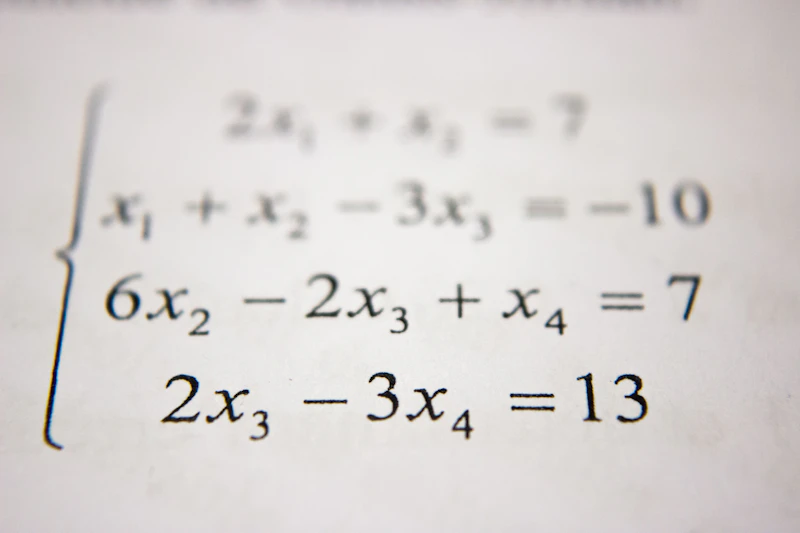Mastering Discrete Mathematics Using AI Tools
Discrete mathematics is a cornerstone of computer science, engineering, and many other STEM fields. It provides the fundamental principles behind algorithms, data structures, logic, and cryptography. However, many students find this subject challenging, often struggling with its abstract concepts and rigorous proofs. Fortunately, the emergence of ai discrete mathematics tools is revolutionizing how students learn and master this critical area. This blog post explores the challenges of learning discrete mathematics and how AI-powered solutions, like GPAI, can provide invaluable assistance.
The Problem: Overcoming the Hurdles of Discrete Mathematics
STEM students face several challenges when learning this topic:
- Complexity of Concepts: Discrete mathematics delves into abstract concepts like set theory, logic, graph theory, and combinatorics, which can be difficult for students to grasp initially. Many of these concepts require a different way of thinking than traditional calculus-based mathematics, making the transition challenging for some students.
- Rigorous Proofs: A significant portion of discrete mathematics involves constructing and understanding formal proofs. Students often struggle with the logic and structure required to build a valid argument, and mastering different proof techniques like induction and contradiction requires extensive practice.
- Time-Consuming Problem Solving: Solving problems in discrete mathematics often requires careful analysis and methodical application of concepts. This can be time-consuming, especially when dealing with complex problems or proofs, leaving students feeling overwhelmed and pressed for time.
- Limited Personalized Support: Traditional classroom settings may not provide sufficient individualized attention to address each student's specific learning needs. Students who struggle with particular concepts may find it difficult to get the personalized help they need to succeed, leading to frustration and difficulty catching up.
These challenges can lead to discouragement and hinder students' progress in related STEM courses. Successfully navigating these hurdles requires a strategic approach and access to effective learning resources.
The Solution: AI-Powered Assistance
AI tools are transforming the landscape of education, and discrete mathematics is no exception. AI-powered platforms like GPAI offer numerous benefits to STEM students:
- Personalized Learning Paths: GPAI can analyze a student's performance and identify areas where they need the most help. Based on this analysis, it can create a personalized learning path that focuses on specific concepts and skills, ensuring that students receive targeted support where they need it most.
- Interactive Problem Solving: Instead of simply providing answers, GPAI can guide students through the problem-solving process step-by-step. This interactive approach helps students develop a deeper understanding of the underlying concepts and improves their problem-solving skills.
- Automated Feedback and Grading: GPAI can automatically grade assignments and provide detailed feedback on students' work. This allows students to quickly identify their mistakes and learn from them, improving their understanding and performance. It also frees up valuable time for instructors to focus on providing personalized support and guidance.
- Access to a Vast Knowledge Base: AI platforms can access and process vast amounts of information, providing students with a comprehensive resource for learning discrete mathematics. This includes definitions, theorems, examples, and practice problems, all readily available at their fingertips.
- Proof Verification and Generation: Some ai discrete mathematics tools can even assist with proof verification and generation. This can be particularly helpful for students who struggle with the logical reasoning required to construct formal proofs. The AI can check the validity of a student's proof or even suggest steps to complete a proof.
By leveraging the power of AI, students can overcome the challenges of discrete mathematics and achieve a deeper understanding of this essential subject.
Practical Examples: GPAI in Action
Here are some specific ways GPAI can help STEM students master discrete mathematics:
- Logic and Proofs: GPAI can provide step-by-step guidance on constructing truth tables, applying logical equivalences, and using proof techniques like induction and contradiction. It can also verify the correctness of a student's proof and provide feedback on how to improve it.
- Set Theory: GPAI can help students understand set operations, relationships between sets, and applications of set theory in computer science. It can also generate examples and practice problems to reinforce their understanding.
- Graph Theory: GPAI can assist with visualizing graphs, identifying graph properties, and solving graph-related problems like shortest path and minimum spanning tree. It can also provide interactive simulations to help students explore different graph algorithms.
- Combinatorics: GPAI can help students understand counting principles, permutations, combinations, and other combinatorial concepts. It can also provide tools for calculating probabilities and solving combinatorial optimization problems.
These examples demonstrate the potential of AI to transform the learning experience and empower students to succeed in
ai discrete mathematics and beyond. By providing personalized support, interactive problem solving, and access to a vast knowledge base, GPAI can help students overcome the challenges of discrete mathematics and unlock their full potential.
Conclusion: Embracing AI for Success
Mastering discrete mathematics is crucial for success in many STEM fields. While the subject can be challenging, AI-powered tools like GPAI are making it more accessible and engaging for students. By providing personalized learning paths, interactive problem solving, and automated feedback, AI is helping students develop a deeper understanding of discrete mathematics and build the skills they need to succeed in their academic and professional careers. Embracing these innovative technologies is essential for STEM students seeking to excel in this critical subject and unlock their full potential in the rapidly evolving world of technology. The future of ai discrete mathematics is bright, and students who leverage these tools will be well-positioned for success.
